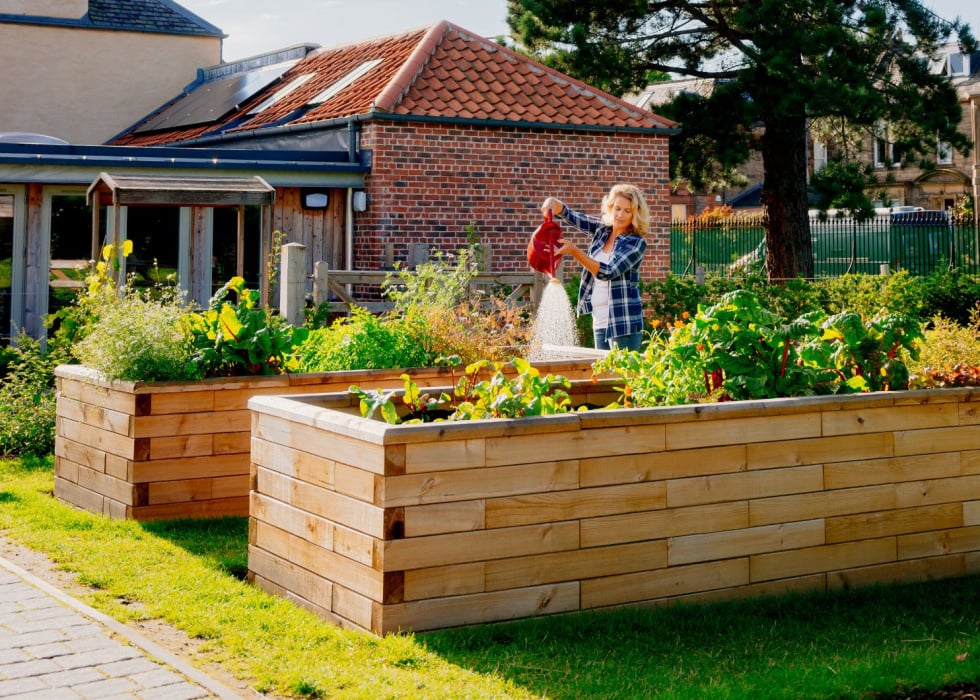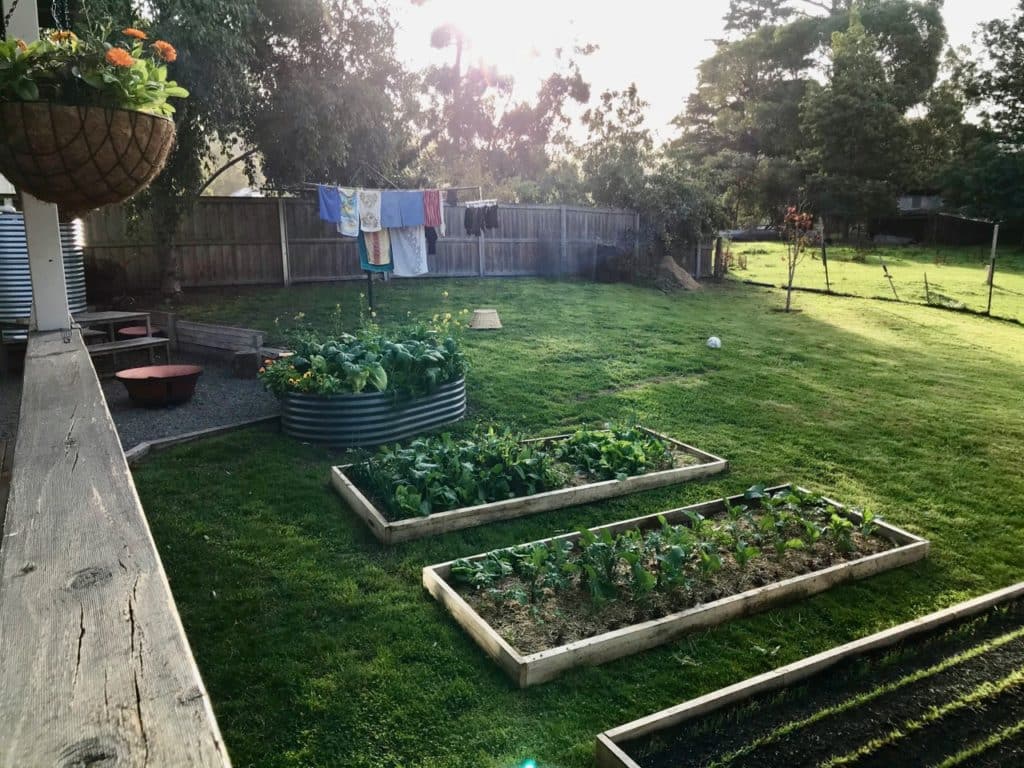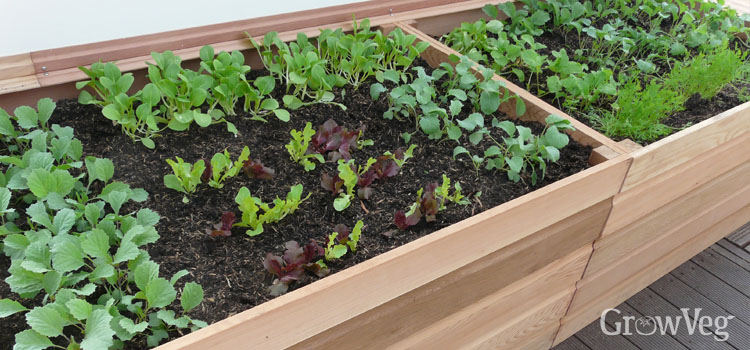How To Build A Raised Veg Patch In Easy Steps
Introduction
Growing your own vegetables is a great way to save money, eat healthier, and get some exercise. But if you don't have a lot of space, a raised veg patch is a great option. Raised beds are easy to build and maintain, and they can be customized to fit your needs.
In this blog post, I will walk you through the steps on how to build a raised veg patch in easy steps. I will also provide some tips for choosing the right location, materials, and plants for your garden.
Main Content
Step 1: Choose a location
The first step is to choose a location for your raised bed. The ideal location is in full sun, but it should also be in a spot that is easy to access. You will also need to make sure that the ground is level.
Step 2: Choose the right materials
There are a variety of materials that you can use to build a raised bed. Some popular options include wood, bricks, and concrete blocks. The type of material you choose will depend on your budget and personal preferences.
Step 3: Build the frame
Once you have chosen your materials, you can start building the frame for your raised bed. The size of your bed will depend on how much space you have available and how many vegetables you plan to grow.
Step 4: Fill the bed
Once the frame is built, you can start filling the bed with soil. A good mix of compost, topsoil, and sand will provide your plants with the nutrients they need to thrive.
Step 5: Plant your vegetables
Now it's time to plant your vegetables! Choose a variety of vegetables that will grow well in your climate. You can also plant herbs and flowers in your raised bed.
Step 6: Water and maintain your garden
Raised beds need to be watered regularly, especially during hot weather. You should also fertilize your plants every few months.
Tips
- If you are on a budget, you can use recycled materials to build your raised bed.
- If you have poor soil, you can add a layer of compost or manure to the bottom of the bed.
- To prevent weeds, you can line the bottom of the bed with landscape fabric.
- You can add a layer of mulch to the top of the bed to help retain moisture and suppress weeds.
Conclusion
Building a raised veg patch is a great way to get started in gardening. It is relatively easy to do, and it can be a lot of fun. With a little planning and effort, you can have a beautiful and productive vegetable garden in no time.
Are you thinking about starting a raised veg patch? If so, you've come to the right place! A raised veg patch is a great way to grow your own vegetables, even if you don't have a lot of space. Raised beds are also easier to care for than traditional gardens, and they can help to improve the drainage and fertility of your soil.
If you're interested in learning more about raised veg patches, I recommend visiting Garden Wiki. This website has a wealth of information on everything you need to know about starting and maintaining a successful raised veg patch. You'll find articles on topics like choosing the right location, building your own beds, and selecting the right plants.
FAQ of raised veg patch
1. What are the benefits of having a raised veg patch?
There are many benefits to having a raised veg patch. Here are a few:
- Raised beds are easier to weed and maintain than traditional gardens.
- They can be built in any location, regardless of the soil quality.
- They can be raised to a comfortable height, making it easier for people of all ages to garden.
- They can be customized to fit the specific needs of the gardener.
- They can help to improve drainage and aeration, which can benefit plant growth.
2. What are the different types of raised veg patches?
There are many different types of raised veg patches, each with its own advantages and disadvantages. Here are a few of the most common types:
- Wooden raised beds: These are the most common type of raised bed. They are relatively easy to build and can be customized to fit any size or shape.
- Concrete raised beds: These are more durable than wooden raised beds, but they are also more expensive.
- Brick raised beds: These are similar to concrete raised beds, but they are made of brick. They are very durable and can last for many years.
- Metal raised beds: These are the most durable type of raised bed, but they are also the most expensive.
3. How do I choose the right size for my raised veg patch?
The size of your raised veg patch will depend on a number of factors, including the amount of space you have available, the types of vegetables you want to grow, and the number of people who will be using it.
As a general rule, raised beds should be at least 18 inches deep. This will give the roots of your plants plenty of room to grow. The width of your raised bed will depend on the size of your space and the types of vegetables you want to grow.
4. What type of soil should I use in my raised veg patch?
The best type of soil for a raised veg patch is a loose, well-draining soil that is rich in organic matter. You can buy pre-made potting soil or compost, or you can make your own soil mix by combining equal parts garden soil, compost, and sand.
5. How do I care for my raised veg patch?
Once you have established your raised veg patch, it is important to care for it properly. Here are a few tips:
- Water your plants regularly, especially during hot weather.
- Mulch around your plants to help retain moisture and suppress weeds.
- Fertilize your plants according to the instructions on the fertilizer label.
- Keep an eye out for pests and diseases and take steps to control them if necessary.
Image of raised veg patch
- A raised veg patch made from wood. The bed is filled with rich, dark soil and is planted with a variety of vegetables, including tomatoes, cucumbers, and peppers.
- A raised veg patch made from bricks. The bed is surrounded by a brick wall and is planted with a variety of herbs, including basil, oregano, and thyme.

- A raised veg patch in a greenhouse. The bed is filled with nutrient-rich soil and is planted with a variety of vegetables, including lettuce, carrots, and peas.

- A raised veg patch in a backyard. The bed is surrounded by a wooden fence and is planted with a variety of vegetables, including potatoes, onions, and corn.

- A raised veg patch in a community garden. The bed is filled with a variety of vegetables, including tomatoes, squash, and beans.


Post a Comment for "How To Build A Raised Veg Patch In Easy Steps"